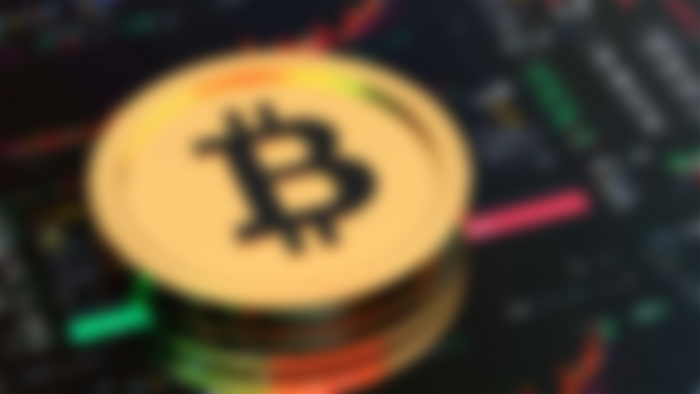Final Act on the UST Case
In this week's article, we try to do a 'post-mortem' after what happened to UST and Luna.
In our article last week, we touched on the story of UST, starting with stable currencies, and finally emphasized the importance of decentralization. In this article, we will discuss what lessons we can learn about the future of DeFi by looking at what has happened in the past week.
Where we were?
At the time of preparing our previous article, the Terra system was struggling at 80 cents in an effort to anchor its stable coin, the UST, to one US dollar. After that, the UST quickly went down to 10 cents in a very short time. However, the Terra system's currency, LUNA, has lost 99.99% of its value, falling to such atomic values that we can no longer count the zeros after the decimal point.

After this sad end, many people who have invested in this system for a long time, and who have recently bought, thinking that it is a way out of the rapid decline, have experienced serious losses. I have to say that I am personally very sorry about this.
What conclusions can we draw from what happened?
Although it will not make up for the losses, I believe that the crypto world can come out of this crisis stronger if some lessons are learned from the experiences. Let's take a quick look at what these lessons might be:
DeFi is an emerging field, theory and practice may not fit together.
It is always talked about that DeFi is a risky area, and it is frequently included in our articles. Please do not assume that the author is adding these warnings to 'ensure himself'. In a burgeoning field like DeFi, no matter how much scenario work you do about experimental projects, practical life can throw up completely different obstacles in front of you.
Delphi Digital, one of the most respected names in the DeFi field, explained very clearly where the mistake was made about Terra, which is a nice project in theory, in the self-criticism it published recently:
They found the thesis of the Terra ecosystem, which they met in early 2021, to be a relatively scalable blockchain integrated into algorithmic stable currencies, focused on real-world adaptation, and very interesting. Afterwards, they thought that the high interest offered by the loan protocol Anchor, which started operating on Terra in March, was perfectly compatible with the thesis of broad adoption of the IHR. Since the returns in DeFi were usually around 100% at that time, the 20% interest given by Anchor seemed quite reasonable to them.
Pretty logical in theory. Let's see what happened next: While the yields in DeFi fell rapidly in early 2022, the maintenance of this rate by Anchor caused a serious fundraising on Terra. The deficit resulting from the high interest given was initially covered by Anchor reserves, but later on this was not possible.
The fragility caused by rapid growth can become fatal, especially during bad market periods. To prevent this, the measure taken by Terra was 'let's throw BTC into the reserves'. This measure, which seems quite reasonable on paper, turned out to be not as good as it seemed, by lowering the price of BTC even more when used during bad times in the market.
Degrees of risk are important
Another common situation is the 'perception of relative risk'. What do we mean by that? There is a segment that knows that DeFi world products are risky and this segment diversifies its portfolio accordingly. In doing so, it invests some of its money in high-return-high-risk products, while investing the rest in less risky products.
In classical finance, these so-called less risky or risk-free products are seen in the form of government bonds or cash holdings as we know it. Some actors of the DeFi world also considered UST as a 'risk-free' currency, as its name is pegged to the US Dollar. It has been bitterly experienced in recent events that the goose's foot is not like that.

Fanaticism has a place and a time
Every idea or project needs a fanatical community, especially at the beginning. Fans keep the project alive despite its shortcomings and lapses, and help it stand up when the project falls through before it matures.
On the other hand, the same fanaticism can become toxic as the project matures. Similar movements have been seen recently in the Terra system community as well. Community members (especially founder Do Kwon) had become so aggressive that they accused criticism of the system as stupid.
Ignoring the criticisms made prevents the risks of the projects from being fully understood. If the necessary discussions were made and these risks were discussed, perhaps public awareness would increase and pressure would be created on the project owners to make the necessary improvements.
Transparency is essential to DeFi
It would be useful to remind you again of an issue we mentioned in our previous article: One of the basic principles in the establishment of DeFi is transparency.
Why is transparency so important? In decentralized systems, there is no control mechanism. Even the founding teams of many products on the market are not clear. Then how can we trust these products? Thanks to transparency.
What kind of transparency is this? All of the software codes of the products are open. Recording all transactions on the blockchain. Initiatives that gradually decentralize as they grow must have a roadmap that they make public. The strategic decisions that will guide the initiative are taken by the community through public voting. It is only thanks to these substances that DeFi can be trusted.
In the recent UST/Terra accident, we have seen that this basic principle of DeFi has been moved away. In particular, the fate of billions of dollars of BTC, which the system set aside to protect itself, was unknown for a long time. If this money were traded on the blockchain, we could all easily track how it was used. The Terra team transferred the money to central exchanges instead of such a move. Exactly 10 days after the events started on May 7, he made a statement on May 16 and announced that he had sold 80,000 BTC in the safe. This is an unforgivable mistake for DeFi. There couldn't have been a faster way to lose trust.
It's a road accident
Recently, I have been hearing comments from many people in my close circle saying, "This incident hurt DeFi a lot." Personally, I have an opinion contrary to the general atmosphere on this issue.
Of course, what happened is the biggest crisis ever experienced during the growth of DeFi. Likewise, it should acknowledge that this crisis will delay the adoption of DeFi by the broad segments.

Nevertheless, what happened was a good example in terms of showing us what can happen when DeFi deviates from its basic principles. The rapid rise in UST caused other stable currencies to enter the market, such as USDD, brought by controversial characters like Justin Sun. If this happened a few months later, we would most likely see the UST and the billions of dollars invested in USDD or other stablecoins vanish. From this point of view, it can also be thought of as 'profit from loss' (and admittedly, this is a very optimistic point of view).
Conclusion
Although this is the biggest crisis DeFi has ever experienced, which resulted in the UST losing the US dollar anchor and the Luna falling to zero, it is possible that aftershocks will continue. Has the DeFi world learned the necessary lessons from this? Will it go into a more transparent, more open to criticism, maybe more cautious growth from now on? My view is that major protocols draw the necessary lessons. There will definitely be crises like this in the future. Our hope is that small investors can get through this type of crisis as undamaged as possible. We will see it all together.


